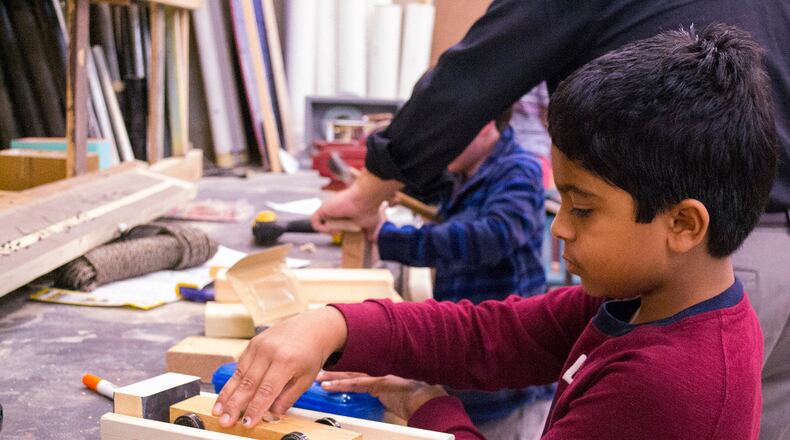Information about the Galloway School: gallowayschool.org.
Ask Elias Kremer how things are going in his fourth grade class at the Galloway School, and the 10-year-old can’t come up with enough superlatives.
“It’s super fun,” he exclaimed. “It’s super special. It’s not just learning; it’s the first time in my life that I can do something I enjoy. Fun is very important.”
Kremer and his 63 classmates at the Buckhead school are enthused about an addition to the usual curriculum that gives them time to explore subjects they select based on their personal interests. Dubbed the “passion project,” the program is based on a similar approach employed by Google, said teacher John Griffith.
“Google allows its employees to follow their passions and create different ideas,” he said. “At a retreat in May, I was introduced to a video of a high school where they were following the same principles. Here, we wanted to look at how we could do it in early learning grades.”
Students are allotted about 90 minutes a week to work directly on projects they select. Carving that time out of the usual schedule was the first challenge.
“From a logistics standpoint, it can be difficult to do,” said Griffith. “There’s already a lot going on in fourth grade. But when you marry the projects to curriculum, you find students are writing, figuring out what kind of math they need and still learning, just in another area. When you look at the process directing the product, it becomes very valuable.”
Students select their own projects, conduct research and, in some cases, work in collaborative teams on a shared topic. Teachers provide guidance and input to keep the focus on the process and problem-solving.
“It starts with students identifying what they wish to work on,” said Griffith. “Then they need to figure out what obstacles they might face and how they can problem-solve to overcome them. They have to write their way through all of that first.”
The projects students designed vary wildly: They’ve been making donuts, producing a magazine, improving basketball skills and building model race cars.
“The choices were wide open,” said Griffith. “Two basketball players wanted to develop their shooting, so they’ve been charting their progress, filming their shots and looking at videos to improve their techniques. Some would-be bakers got together to deep-fry donuts, and after they bombed on their first try, they worked with a baker to come up with something they were happy with. About five students are sharing their passion for journalism, photography and writing and are interviewing other students about their projects for a magazine.”
Kremer is devoting his time to building race cars and a track to run them on.
“I love Legos and building, but I wanted to try something new, so my friend, Rohan, and I came up with some good, substantial ideas for our cars and then found a good design for a track. We’ve let other students test out our cars. I’ve learned that you’re never going to know if you’re good at something unless you try it. But most of all, we’ve had so much fun doing it.”
About the Author
The Latest
Featured


